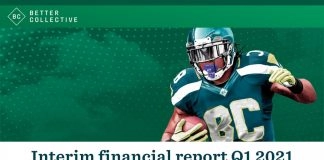With the NBA play-offs heating up, Jonathan Smith, Founder of Sportsbook Training Service, provided two simple methods to boost the way sportsbooks arrive at the most accurate odds for basketball games.
It came as part of his workshop entitled ‘Making predictions in basketball – two easy solutions’ at the SBC Digital North America conference.
Delving deeper into his theory, Smith stated: “The pandemic has created some challenges for everyone in sports betting, with the cancellation and rescheduling of events as well as the shortening of seasons.
“The NBA hasn’t been immune to this, having only played 72 regular season games from the 2020/21 season. But hopefully as odds compilers, we can still make sense of what we observe in the field of play to come up with some reasonable predictions.”
Analysing what has been a quite spectacular and unpredictable campaign, Smith posed the question: “What happens, on average, when teams play?”
With a simple calculation, he revealed that for this season, the average score for home teams equated to 113.33 points, compared to the average score for visiting teams which totalled 111.86.
These figures, the Sportsbook Training Services Founder explained, have suggested that ‘home advantage’ has been whittled down throughout the pandemic.
He said: “What I want to do is to determine what the average score is for both visitors and home teams in general. We’ll do that by placing our cursor in cell J3 and typing “=AVERAGE(e-e)”. That returns 111.86. We’ll do the same for home teams, which returns 113.83.
“That in itself is quite a revealing statistic because home advantage usually accounts for two or three points. But in the largely spectator-free COVID era, that advantage has been whittled down to one point.”
After working out teams’ visitor points scored and conceded, the points scored and conceded when playing at home, as well as each team’s strength attack and defence, Smith noted that his method had worked very well, Every match was within two points of the spread, and the totals – albeit with one exception – hit the target set out by the prevailing market at the time.
Smith continued: “Predicting future matches on the basis of previous results is an obvious way to do things, but it is also a very naive model as it doesn’t necessarily capture everything you need to know.
“For example, this doesn’t account for whether a key player is missing from the line-up, or if someone is carrying an injury into the match. I think we would be wise to look elsewhere for this information.
“In this second example, we’re still going to use our rate parameters. But instead of them being informed by points averages as they were in the first example, we’re going to optimise them by using the closing lines of bookmakers in those matches.
“Why the closing lines? Well, by game time, all of the information that can be known about a game is known; this is then reflected in the team’s price. We can reasonably say that the odds, stripped of their bookmaker overround, are the nearest reflection of probability that we’re going to find.”
Building the model for method two, Smith firstly worked out the visitor score average, home score average, before altering each teams’ attack strength and defensive weakness rate parameters – “such so that they reflect, as accurately as possible, the expected scores that the market has decided upon.”
After a series of calculations, Smith revealed that the second method was “encouraging” – however did not appear to be quite as accurate as the simple averages method. But to ensure that both points and market contribute to the final spread, Smith took a weighted average of the two methods.




